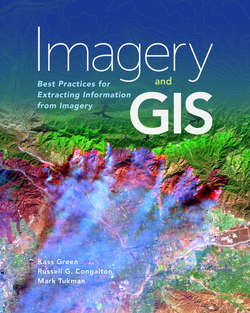Читать книгу Imagery and GIS - Kass Green - Страница 21
На сайте Литреса книга снята с продажи.
Image Classification — Turning Data into Map Information
ОглавлениеTo simplify and make sense of our world, humans classify the continuous stream of data received by our sensory system—our eyes, ears, tongue, nose, and skin. We receive the data and our brains turn it into information. For example, if we see a four-legged animal, shorter than 1 meter, with a long snout and canine teeth, we might identify it as a dog, wolf, or coyote. If we determine it is a dog and the dog is growling, with its hackles up and its teeth bared, we know it is a threatening dog. If the dog is wagging its tail and lowering its body into a submissive posture, we know that it is a friendly dog. Dog, wolf, coyote, threatening, and friendly are all categories of information our brains determine from the data we receive.
When we see an image, our brains immediately start to explore and classify it. We identify features and note how they are related to one another. In a GIS system, when the data of an image is “classified,” it is converted from continuous data into either continuous or categorical information and a map is created. Table 2.1 below provides an overview of the differences between continuous data such as an image, and continuous and categorical information which are derived from imagery.
Table 2.1. Overview of the differences between continuous data, continuous information, and categorical information
